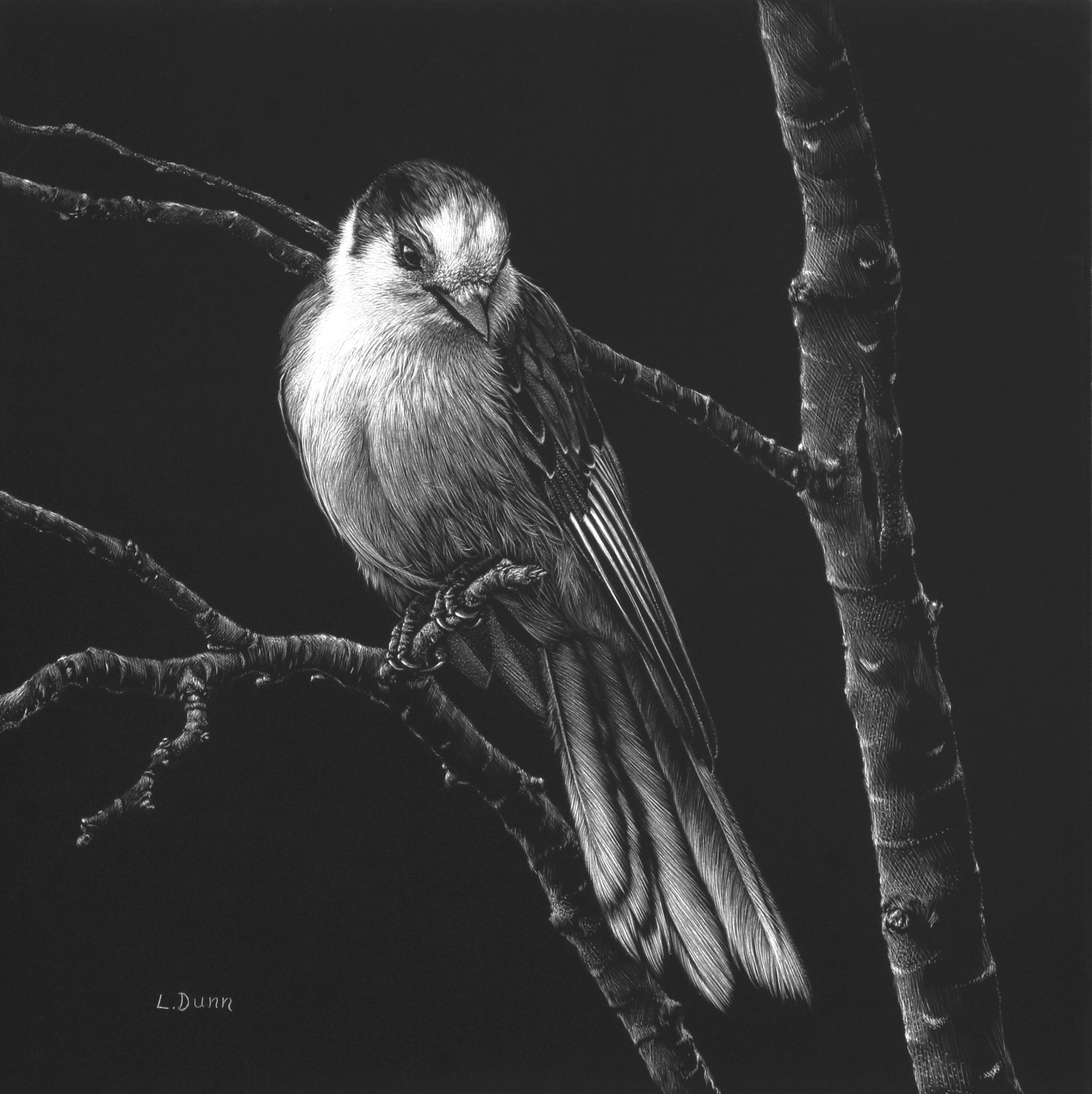LORI DUNN SCRATCHBOARD ART
promoting conservation through artistic efforts
Insert text here.
Whiskey Jack
8 x 8
SOLD
This unusual nickname for the gray jay or Canada Jay ( Perisoreus Canadensis) is based on Algonquin mythology and is a derivation of the word wiskedjak or wisakadjak, meaning "mischievous prankster". Anyone who is familiar with the gray jay knows this to be a fitting name, for these birds, becoming habituated to humans, have been known to steal food from loggers, trappers and campers.
The gray jay inhabits the boreal forests of North America and also sub alpine forests extending south, along the Rocky Mountains, to New Mexico and Arizona. These birds only inhabit areas where there is an abundance of spruce trees, jack pine and lodge pole pine. As they do not migrate, they are regular inhabitants of these areas.
In order to survive the harsh winters of the north, the gray jay will spend it's summers caching thousands of food items. It is thought that spruce and pines are ideal storage sites due to the anti-bacterial properties of the bark and needles. These birds will manipulate food items into a bolus coated in sticky, adherent saliva and wedge these food items under bark, under lichen and among conifer needles, for winter use.
Many times throughout the year I will visit Algonquin Park, the southernmost limit of this bird's range in Canada, and am always delighted by their presence. Extremely curious, they will land quite close to investigate what you are up to, and whether there is any food to be had. The park has done extensive research on the gray jay since the 1960's and it has been one of the longest studies of any marked population of vertebrates anywhere in the world.
